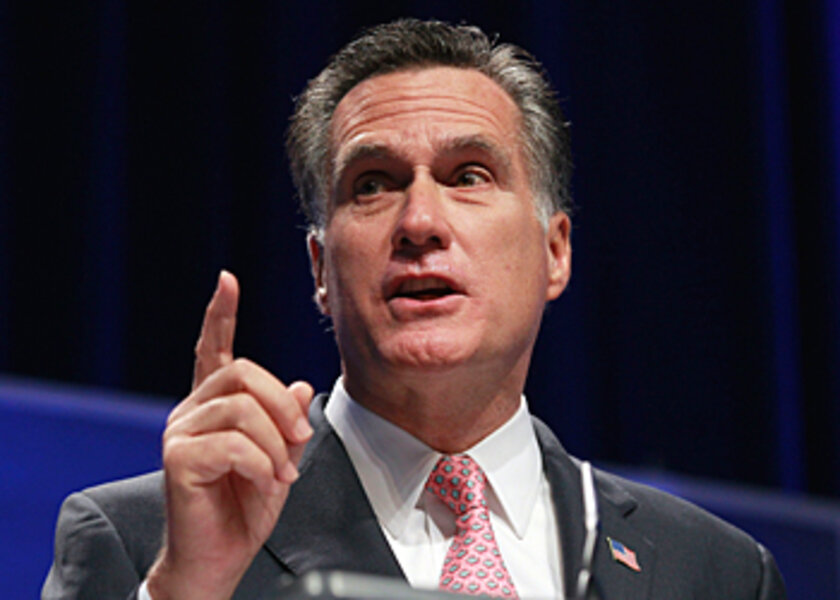Mitt Romney nears presidential bid: How this time might be different
Loading...
| Washington
Mitt Romney made it semi-official Monday: He has formed his presidential exploratory committee, a way-station on the path to a full-fledged presidential campaign.
By forming an exploratory committee, the Republican former governor of Massachusetts can now start raising money for his all-but-certain presidential campaign. Mr. Romney is the second major contender to take that step, after former Minnesota Gov. Tim Pawlenty, and the first repeat customer. In 2008, he lost the Republican nomination to Sen. John McCain of Arizona.
In his announcement video posted on MittRomney.com Monday afternoon, Romney emphasized his business background as a jobs creator.
“President Obama's policies have failed,” Romney said. “He and virtually all the people around him have never worked in the real economy. They just don't know how jobs are created in the private sector. That's where I spent my entire career.”
Romney’s sole focus on the economy in his video provides a likely clue as to how he’ll run for president this time around. In 2008, he tried to reinvent himself as a down-the-line conservative, both fiscal and social. But as governor of Massachusetts, he had campaigned and led as a moderate. His signal achievement was his reform of the state’s health-care system, which included an individual mandate to purchase insurance, the model for Mr. Obama’s reform – and now a big liability among Republicans.
Romney’s Mormon faith also remains a sticking point with some Evangelical voters, who form an important part of the Republican base. This time around, Romney has signaled that he will not campaign hard in Iowa and South Carolina, two early nominating states with large Evangelical populations, and instead will focus on two other early states, New Hampshire and Nevada – New Hampshire, because it neighbors Massachusetts, and Nevada, because of its large Mormon population.
It is no coincidence that Romney taped his announcement video in New Hampshire – and that he dressed casually, without a tie. The rap on Romney last time was that he appeared stiff, and had a hard time connecting with voters.
In general, there has been widespread Republican chagrin at the GOP presidential field this time, such as it is. And the fact that the race is starting late, compared with four years ago, has fueled the perception that it’s a weak field, even one that lacks confidence. Last time, Romney announced his candidacy on Feb. 13, 2007. Now he seems to be tiptoeing in.
The dynamic, though, is completely different. Four years ago, the race was wide open for both parties, as President George W. Bush’s second term wound down, and Vice President Dick Cheney also looked forward to retirement. Now Obama is running for reelection, and at this stage, he’s considered the favorite.
But if the economic recovery falters, someone with Romney’s portfolio could be just what voters want. The question is whether he can make it through the nomination gauntlet, with an energetic tea party movement looking for the best conservative alternative to support.





